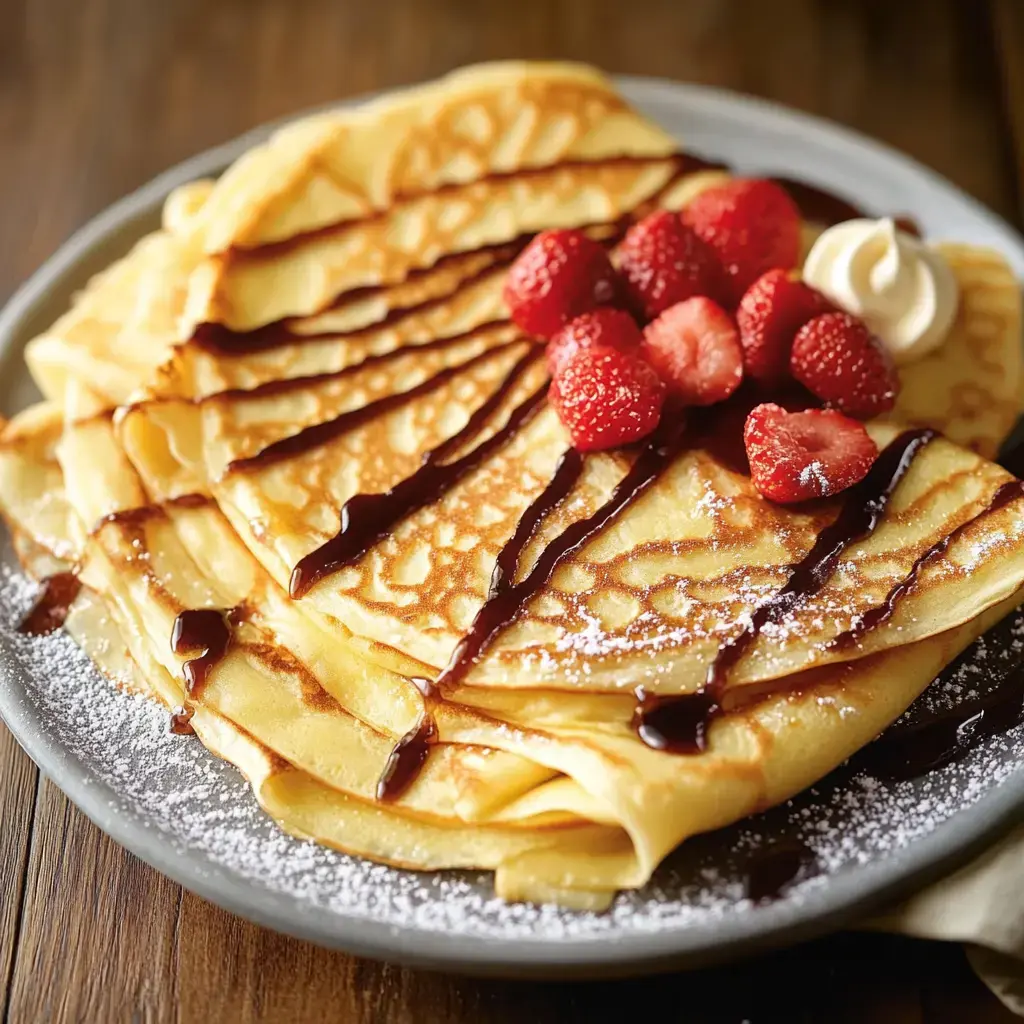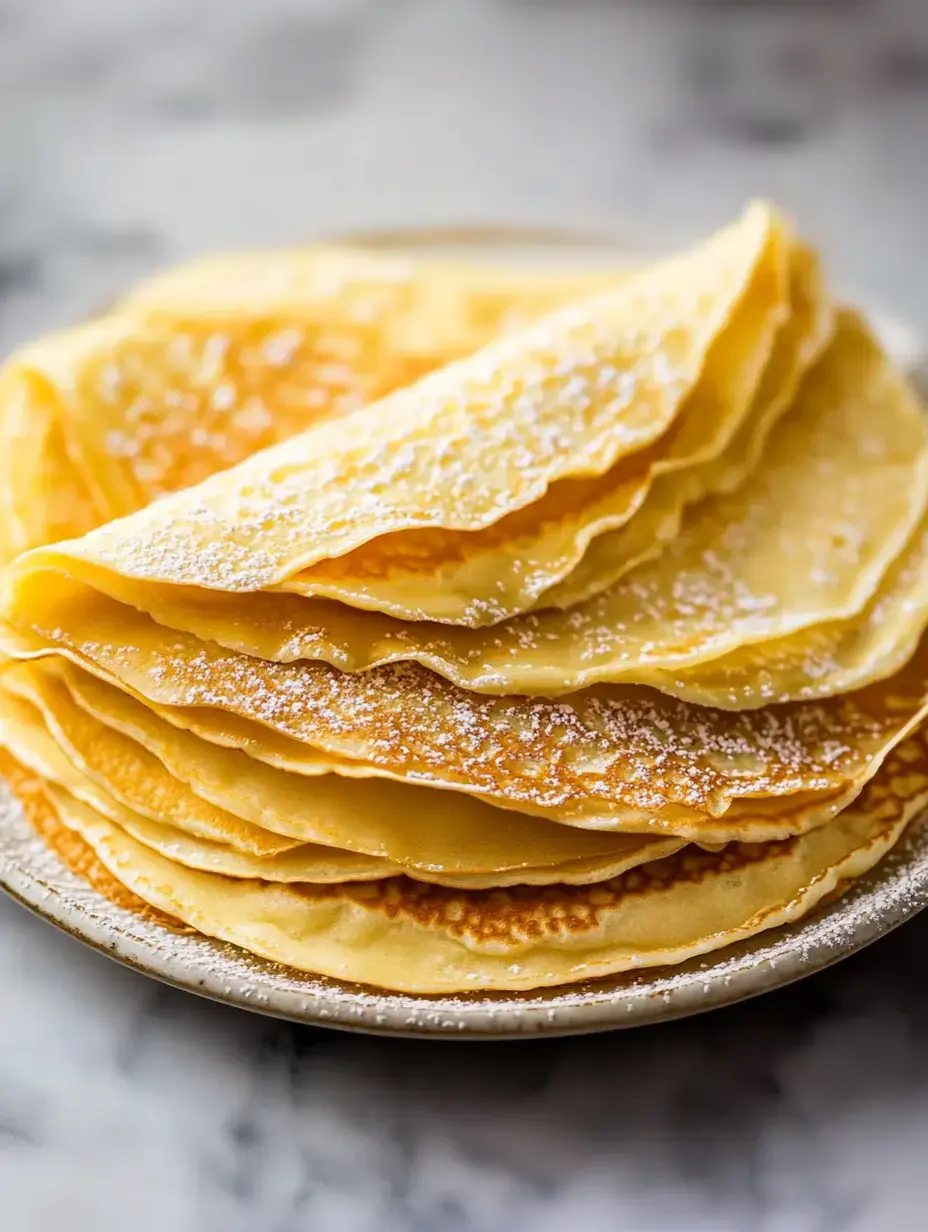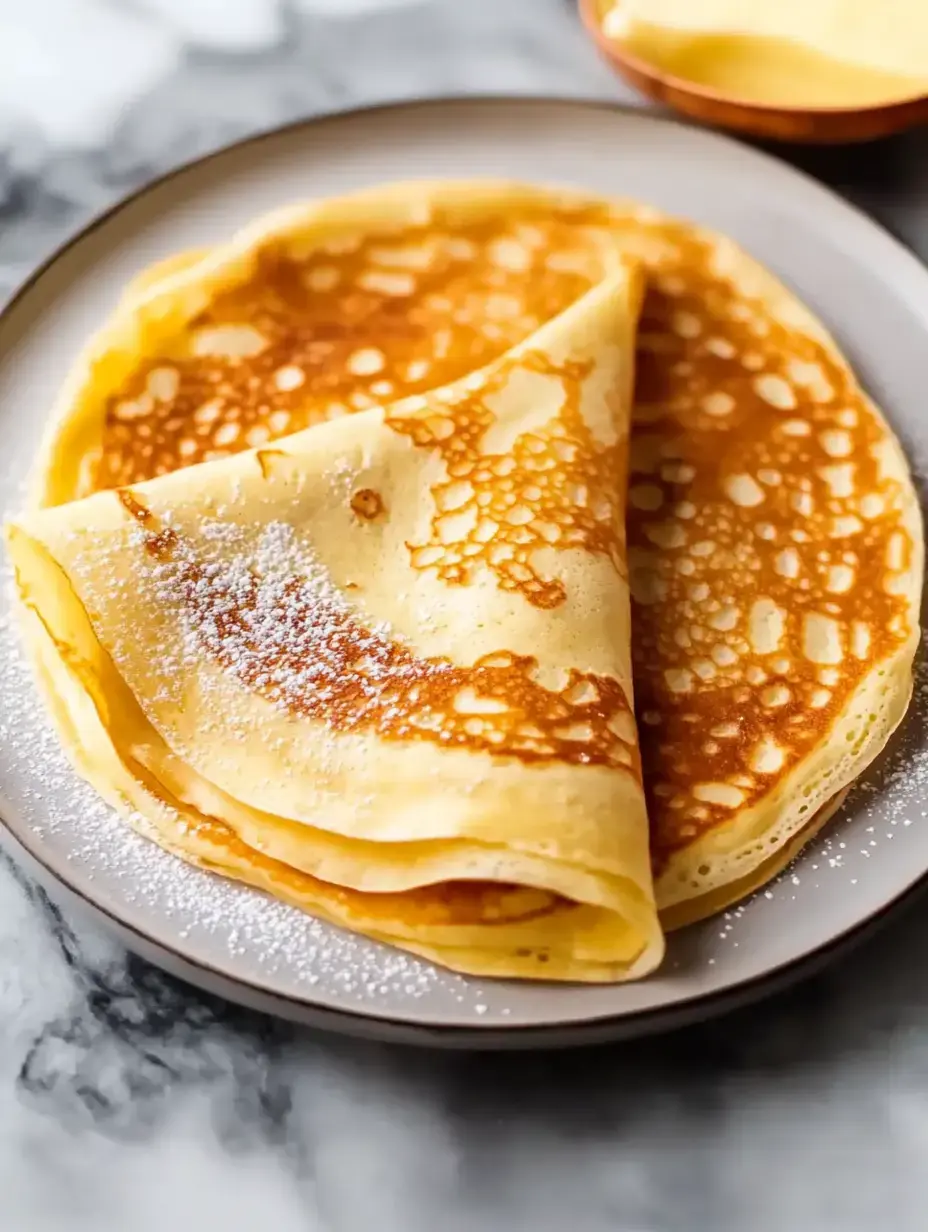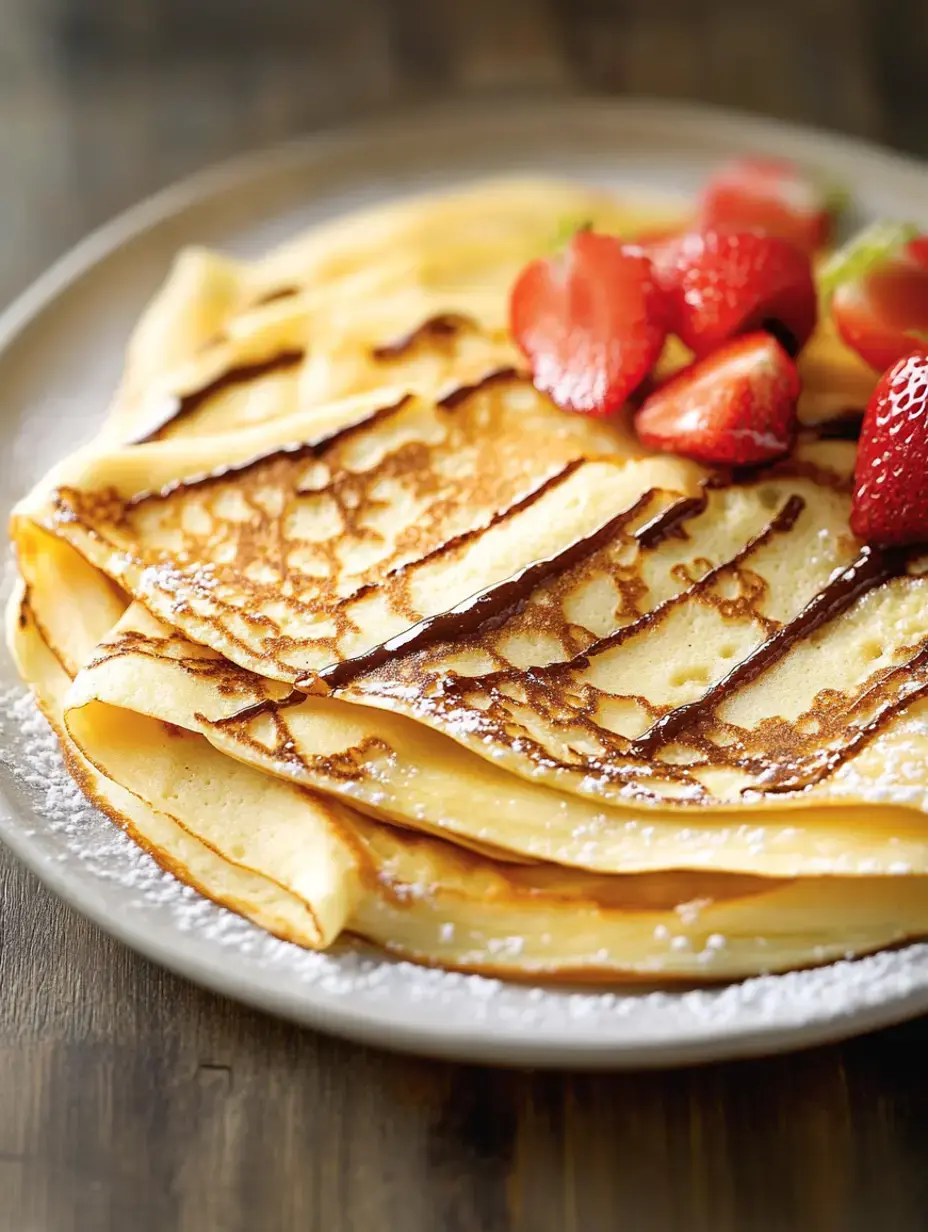 Pin it
Pin it
Perfect French crepes bring elegance and simplicity to any breakfast table. This classic recipe creates delicate, lacy crepes that work beautifully with both sweet and savory fillings. The technique takes some practice, but the results are worth mastering.
What Makes These Crepes Special
The secret to these crepes lies in their versatility and delicate texture. When made properly, they develop a lovely golden color and tender bite that pairs perfectly with everything from fresh fruit to savory cheese fillings.
Essential Ingredients
- All-Purpose Flour: Standard flour creates the ideal texture
- Whole Milk: Provides richness and structure
- Fresh Eggs: Adds tenderness and binding
- Granulated Sugar: Just enough for balance
- Melted Butter: Creates golden color and flavor
- Pure Vanilla Extract: Enhances the overall taste
Basic Preparation
- Create the Batter
- Blend ingredients until completely smooth for best results
- Prepare the Surface
- Heat pan and add thin coating of butter
- Master the Pour
- Use quick circular motions to spread batter evenly across pan surface
Classic Fillings
Traditional options include fresh berries with cream, classic Nutella spread, or honey-sweetened ricotta. For savory versions, try ham and Gruyere cheese or mushroom and herbs.
 Pin it
Pin it
Professional Tips
Non-stick pans produce the most consistent results. Watch for surface bubbles as cooking indicators, and remember that practice leads to perfect crepes.
Time-Saving Methods
Prepare batter in advance and refrigerate overnight. This rest period improves texture and makes morning preparation more efficient.
Alternative Sweeteners
Natural honey creates excellent results as a sugar substitute, offering subtle floral notes that complement many toppings.
Storage Guidelines
Store leftover crepes between wax paper sheets in an airtight container. Reheat briefly in a warm pan to restore original texture.
Entertaining Ideas
Create an interactive brunch experience with a toppings bar featuring fresh fruits, whipped cream, chocolate sauce, and warm preserves.
 Pin it
Pin it
Dietary Adaptations
Quality gluten-free flour blends work well as direct substitutes. Choose cup-for-cup replacement varieties for best texture.
Flipping Technique
Thin spatulas work best for beginners. With practice, the traditional wrist-flip method produces excellent results.
Serving Suggestions
Serve alongside fresh coffee or tea for breakfast, or champagne for special brunches. Light citrus juices provide refreshing balance.
Celebratory Presentations
Layer crepes with cream and toppings for special occasions. A dusting of powdered sugar adds elegant finishing touch.
Texture Variations
Adjust batter consistency by varying liquid amounts. Thinner batter creates delicate crepes while slightly thicker batter produces heartier results.
 Pin it
Pin it
Flavor Enhancements
Citrus zest or warm spices like cinnamon add subtle complexity to basic batter. These variations complement both sweet and savory applications.
Family Participation
Involve others in measuring ingredients and selecting toppings. This creates engaging kitchen experiences and teaches basic cooking skills.
Savory Applications
Omit sugar and vanilla for versatile savory crepes. Fill with eggs, cheese, vegetables, or proteins for substantial meals.
Cultural Heritage
French crepes represent centuries of culinary tradition. This adaptation brings authentic technique into modern kitchens.
Recipe Sharing
Simple techniques and reliable results make this recipe ideal for sharing. Basic skills transfer easily to other cooks.
 Pin it
Pin it
Frequently Asked Questions
- → Why do you rotate the pan while spreading the batter?
- Swirling the pan ensures the batter spreads out thinly and evenly, creating the soft texture that makes crepes so special. It also helps the crepe cook uniformly.
- → Do I need more butter for each crepe?
- Not really—just grease the pan before starting, and that's usually enough to cook all of them. You'll only need one light layer of butter for the whole batch.
- → Can I use different kinds of milk in this recipe?
- Yup! Non-fat, 2%, or whole milk all work great. The richness changes slightly, but the results are still delicious.
- → When's the right moment to flip the crepe?
- Give it about a minute before flipping. Check that the edges look dry and the shine on top has gone away—that means it's ready!
- → Can I mix the batter ahead of time?
- Totally! Mixing it beforehand and letting it chill in the fridge can actually improve the texture. It gives time for the flour to fully absorb the liquid.
